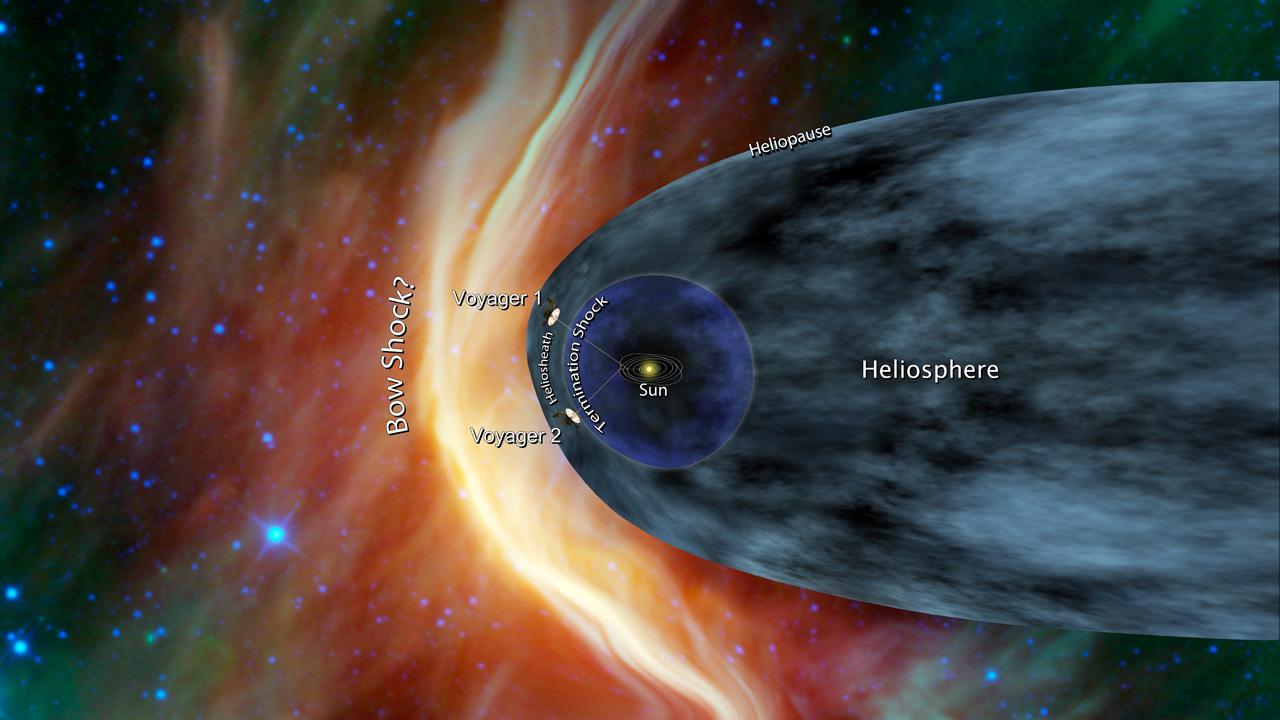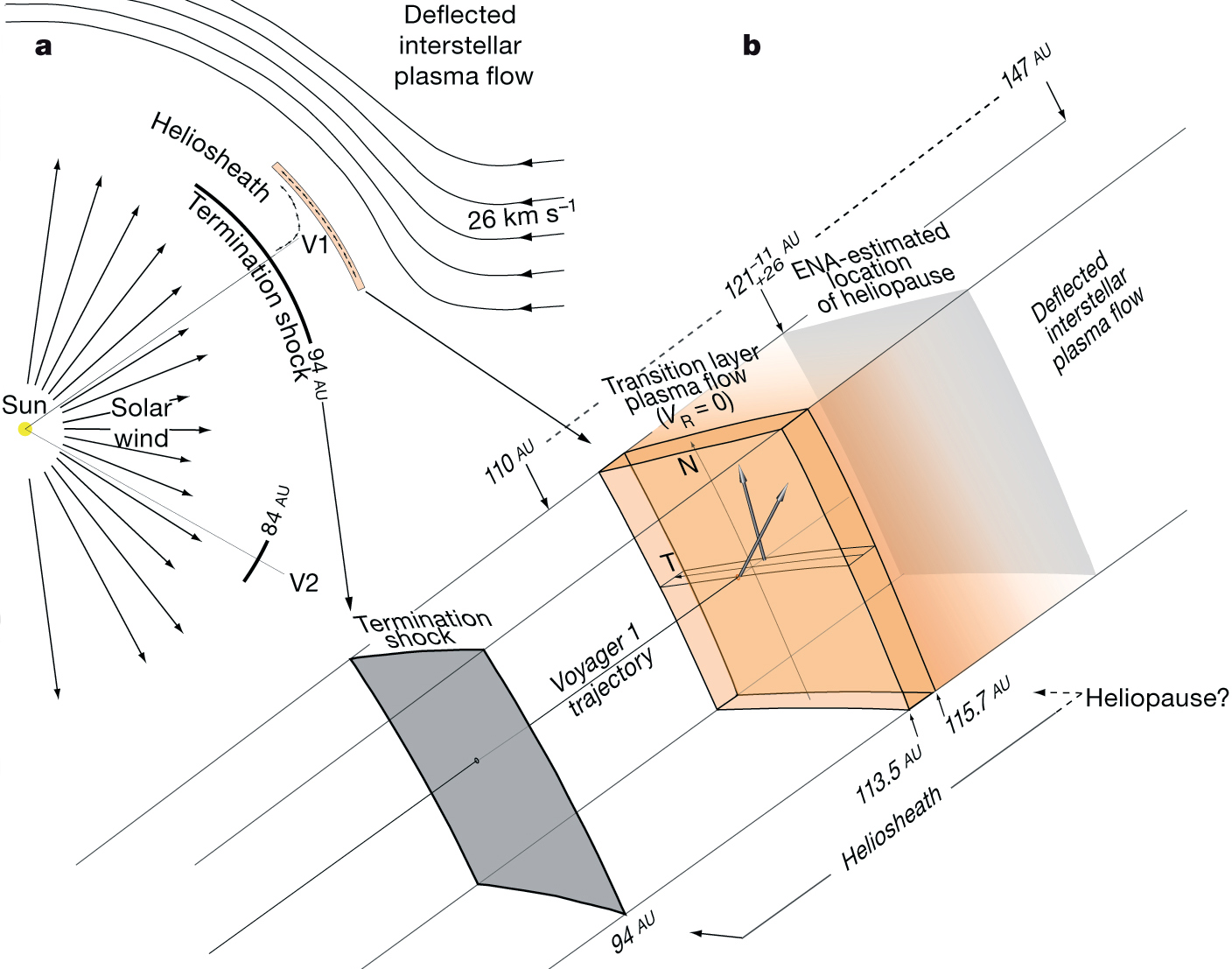Press Release
NASA’s Voyager Probe Edges Closer to Interstellar Space
Surprising observations from NASA’s Voyager 1 spacecraft raise questions about the radial extent of the heliosheath — the heated outer shell of our sun’s sphere of influence — leading scientists to believe the intrepid probe is closer to interstellar space than they thought.
Launched nearly 34 years ago, and now cruising through space some 10.8 billion miles from the sun, Voyager 1 has crossed into an area where the velocity of the hot ionized gas, or plasma, emanating directly from the sun has slowed from 150,000 miles an hour down to zero. Writing in the June 16 issue of the journal Nature, a team of Voyager scientists led by Stamatios Krimigis of the Johns Hopkins University Applied Physics Laboratory shows that the outflow of the solar wind may have stopped because of the pressure from the interstellar magnetic field in the region between stars.
Since December 2004, Voyager 1 has been monitoring the bulk velocity of plasma in the heliosheath, a reservoir of energetic ions and electrons. It has now entered a transitional “layer” surrounding our solar system between the solar wind and the interstellar medium. The radial component of this velocity has been decreasing almost linearly over the past three years from more than 40 miles per second to zero. The transverse component that had been flowing sideways relative to the Sun is also trending toward zero.
“This tells us that Voyager 1 may be close to the heliopause, or the boundary at which the interstellar medium basically stops the outflow of solar wind,” says Krimigis, principal investigator for Voyager’s Low-Energy Charged Particle instrument. “The extended transition layer of near-zero outflow contradicts theories that predict a sharp transition to the interstellar flow at the heliopause — and means, once again, we will need to rework our models.”
Our sun gives off a stream of charged particles that form a bubble in the interstellar medium, known as the heliosphere, around our solar system. The solar wind travels at supersonic speed until it crosses a shockwave called the termination shock. At this point, the solar wind dramatically slows down and heats up in the heliosheath.

